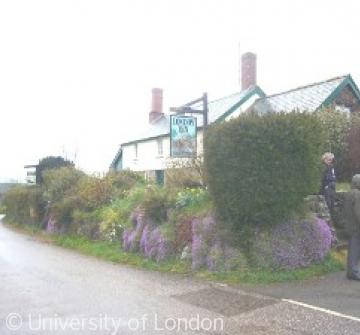Molland Village

Molland together with Anstey and Withypool commons, create an escarpment which lies between the river Barle, and the Devon Yeo, straddling the county boundary.
In the mid 11th century, Molland was a very important manor, perhaps due to its desirable location on the edge of a forest, which was ideal for hunting. At this stage the area was held by Earl Harold, however the Domesday book reveals that by 1086, Molland village belonged to the king.
Molland provides an example of the changes taking place in the mid-11th century. A royal manor, it gained in importance atfer it was granted to the all-powerful Harold Godwinson and became his principal holding in the area. By 1086 a hundred had also been based here, probably a recent creation though the division of South Molton hundred (with which it later re-merged). Molland's new importance was sustained when the manor passed to King William I. Its receipts included the earl's third penny, namely his share of the profits of justice derived from fines levied in the royal courts, in three neighbouring hundreds, including North Molton.
After the conquest in 1086, estates in Anstey and Molland were given to Bladwin the sheriff and Hugh of Avranches (Earl of Chester and William's nephew).
Sources for Molland (as well as North Molton and other manors in Devon) indicate that there was littrle change in settlement between the 11th and 13th centuries although the lowland population of England as a whole trebled between 1086 and 1300.
In Molland, conventionary tenure may have affected farming. Conventionary tenants held short leases, usually seven years, secured by the highest bidder. This deterred long-term family interest and may have been a disincentive to investing in improvement. The manorial extents of Molland show a shift from villein to conventionary tenure between 1274 and 1302, when 26 conventionarii each held half a virgate, aroudn 15 acres.
In the early 14th century, it was recorded that Molland housed a ditchers and fishermen, as well as tailors, a soapmaker and a painter.
Molland parish contains many hamlets and farmsteads. The village consists of a cluster of cottages and a public house around a road junction between the church on the east and Great Champson farm on the west.
For information on Molland village band, click here.
The 2001 census recorded that just under one third of Molland's population was over 65, compared with less than 17 per cent in Exmoor parish.
Content generated during research for the paperback book 'Exmoor: The making of an English Upland' (ISBN 13 : 978-1-86077-597-0 ) for the England's Past for Everyone series







